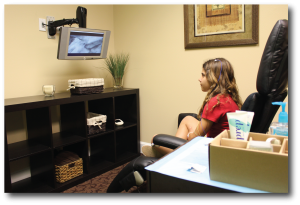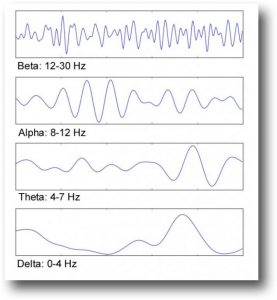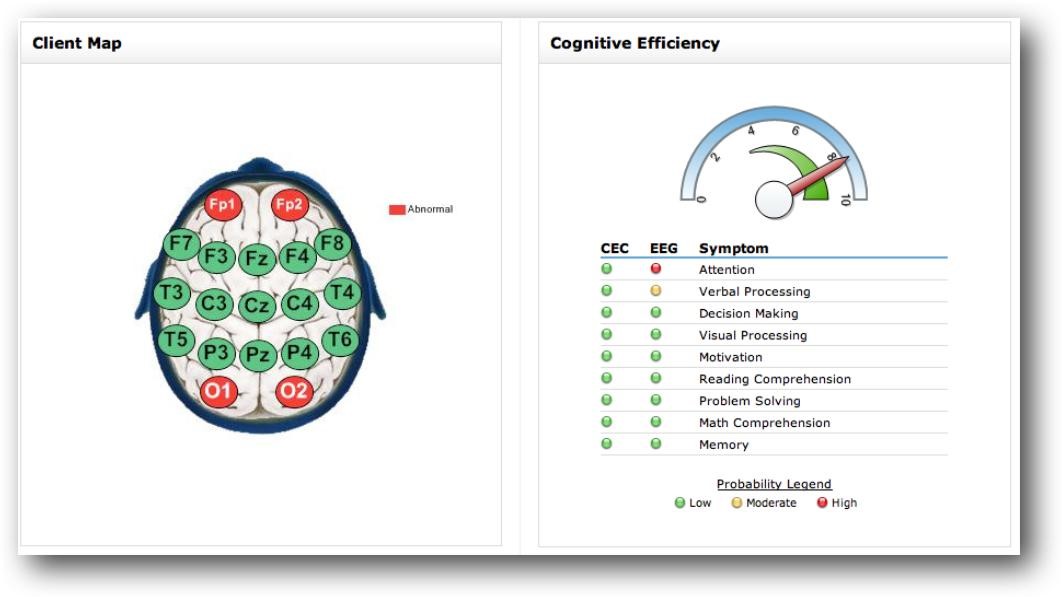 Neurofeedback is a method of exercising the brain in order to change its function, and eventually its structure, over time.
Neurofeedback is a method of exercising the brain in order to change its function, and eventually its structure, over time.
During this process, individuals are connected to a computer that uses sensors to detect the small electrical impulses (brainwaves) that make their way through the skull to the scalp. When these brainwaves – called Electroencephalograph or EEG – signals are in balance, the computer will “reward” the person through feedback.
The feedback can appear in the form of a game, movie or exercise that tells them when they are training just right. This learning can become a permanently learned behavior by the brain through constant reinforcement. This cutting edge technology is highly researched, studied and reproduced over many populations throughout the world.
Neurofeedback is Effective in Improving:
- Mental Clarity
- Learning
- Focus
- Memory
- Coordination
- Awareness
- Visual Processing
- Processing Speed
- Decision Making
- Verbal Processing
Neurofeedback is Effective for:
- The Autism Spectrum
- ADD
- ADHD
- Anxiety
- Depression
- Bi-Polar Disorder
- Learning Disabilities
 Brainwaves?
Brainwaves?
Beta Waves are best known for alertness and sustained intense focus. Too much can cause Anxiety.
Alpha Waves are typically dominant when the brain is in an “idle” state. Too much can cause Depression
Theta Waves are present during drowsy dream-like states. Too much can cause attention problems.
Delta Waves appear highest during intense drowsiness and sleep. Too much Delta slows the brain down.
What is a Brain Map?

BrainMapping is the process by which the tiny electrical impulses that pass through the skull are collected then analyzed into the MiniQ Report. This process usually takes about an hour. It begins with proper skin preparation and a good contact gel (we use Electro-Gel) to make the connection between the electrodes in the cap and the surface of the scalp. Once the data is collected it is passed through a sophisticated database system that quickly analyzes the brainwave activity and then displays it in an easy to read report. This report takes us less than a week to process.
Neurofeedback Preparation
 The skin preparation needed to collect brainwaves is simple and painless. We use a small amount of skin prep – similar to an at-home facial scrub – to exfoliate the sites where we place the electrodes. This gives us a better connection and removes any oils or build up that might interfere with the signal. The electrodes are placed on the scalp using a waxy conductive paste to make a connection between the brainwaves coming through the scalp and computer.
The skin preparation needed to collect brainwaves is simple and painless. We use a small amount of skin prep – similar to an at-home facial scrub – to exfoliate the sites where we place the electrodes. This gives us a better connection and removes any oils or build up that might interfere with the signal. The electrodes are placed on the scalp using a waxy conductive paste to make a connection between the brainwaves coming through the scalp and computer.
Once the connections are made and checked for signal quality, the person will sit comfortably and watch a DVD or listen to music. The brightness or contrast of the DVD and the volume are adjusted as the person produces more of the healthy brainwave patterns we reward. As the sessions progress the training becomes easier for the brain to understand what it has to do to keep the DVD bright on the screen. Amazingly, the brain will build up the neuro-networks to facilitate this process for extended periods of time, and eventually, it becomes easier to sustain the skill for longer and longer. This ability then becomes the new way the brain behaves in situations that require attention, focus, stability and calmness. The effects are long term and do not regress.
Typically, sessions last between 30-45 min and are done at our state-of-the-art office with fully adjustable monitors and comfortable leather zero gravity chairs for maximum comfort and adjustable posturing for children and adults.
When do people begin to feel better?
We discuss how some clients respond with greater sensitivity to Neurofeedback just as predictably as they would to drugs. Some clients feel changes in 1-5 sessions, while others (more typical) notice changes in 15-20 sessions. The graphs below demonstrates a before Neurofeedback symptom checklist and then a year later when they came in for a 1-year follow up. As you can see, their negative symptoms had not come back, and they continue to lead a productive home and work life.
What kind of Success Rates can I expect?
- Depression- 90%
- AD/HD- 90%
- OCD- 70%
- Anxiety- 75%
- Bipolar- 60%
- Autism- 30-45%
*These estimates are based on clinical experience and are averages of symptom reduction
